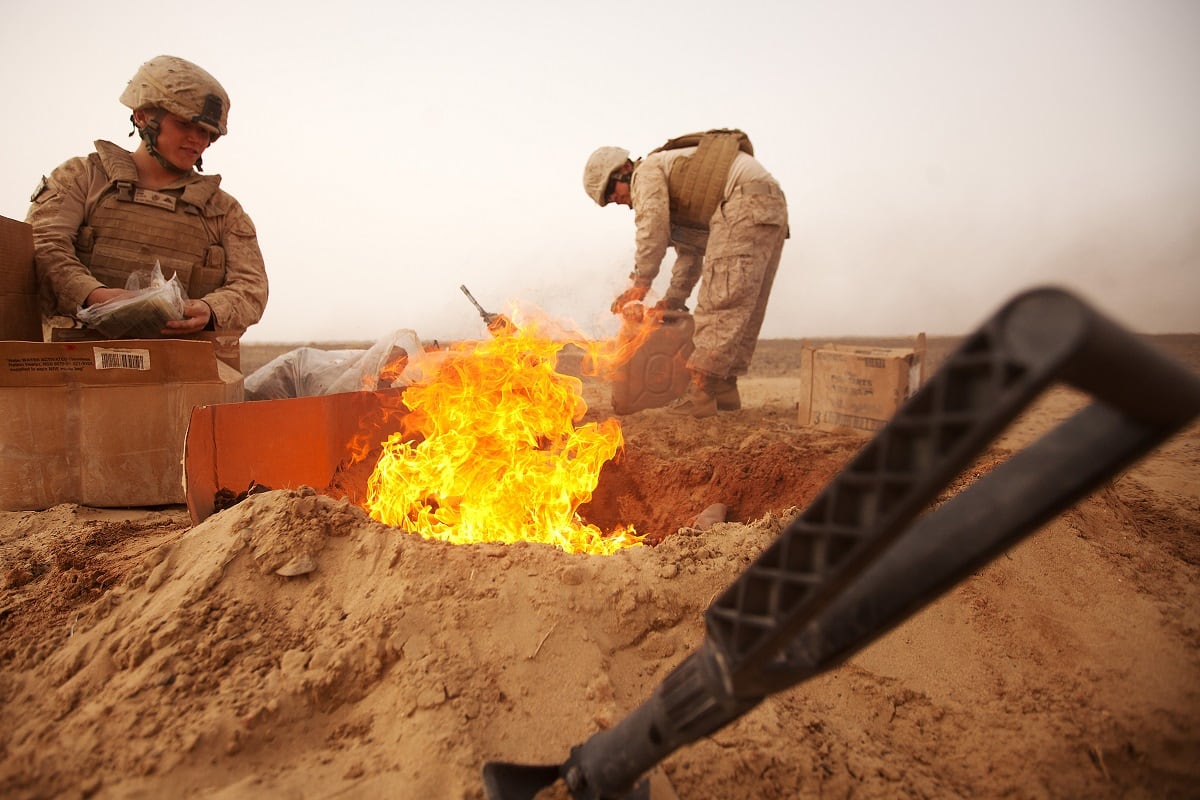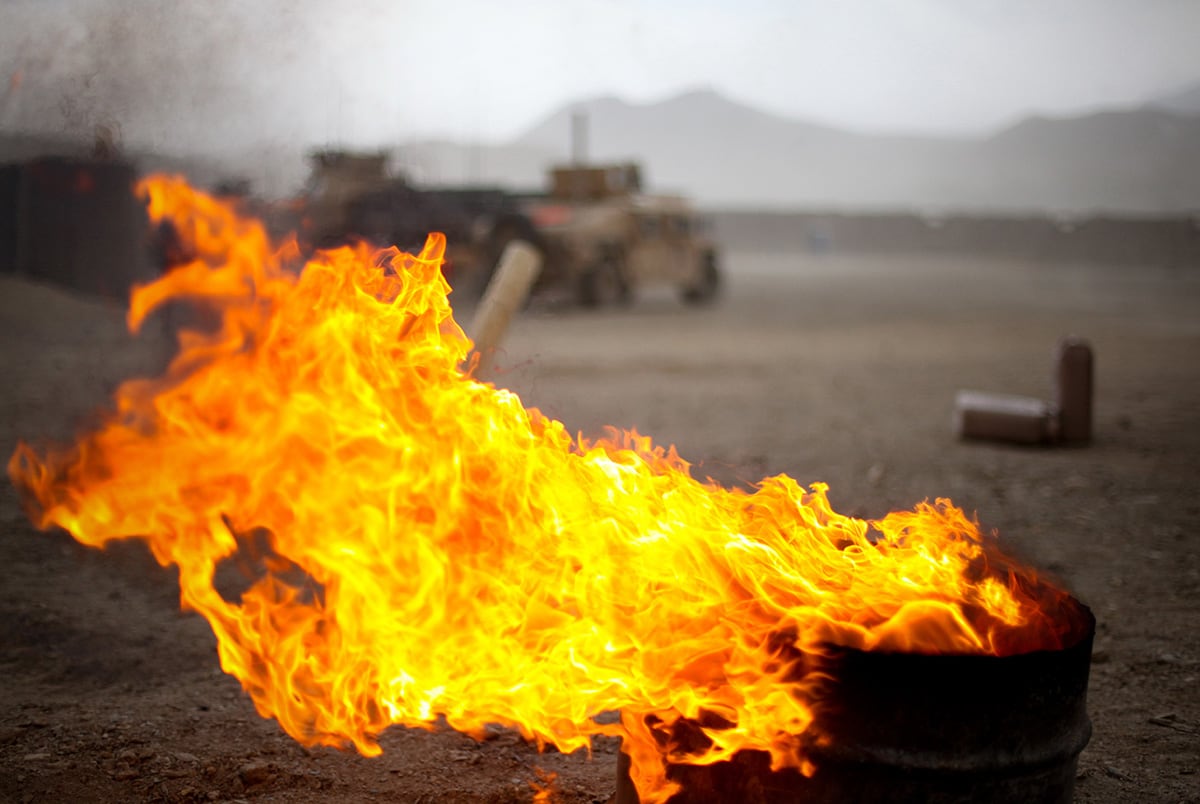WASHINGTON — House lawmakers on Tuesday advanced legislation to improve tracking of troops’ exposure to toxic chemicals from war zone burn pits, but the real political fight over how to help those ailing veterans is set for later this spring.
A group of lawmakers led by California Democrat Rep. Raul Ruiz is planning a push to classify combat burn pit exposure as the presumed cause of a range of lung diseases for veterans who served in Iraq and Afghanistan, opening the door for easier access to medical care and disability benefits.
The proposal is likely to face fierce opposition from VA leadership, which has emphasized the need for clear scientific links between war zone exposures and illnesses later in life before making large-scale benefits decisions.
The department’s official position is that “research does not show evidence of long-term health problems from exposure” to burn pits.
RELATED

But advocates say those scientific shortcomings have more to do with poor monitoring than a lack of proof of the dangers that burn pits present. They point to a host of rare cancers, respiratory illnesses and other health problems among Iraq and Afghanistan veterans that cannot be dismissed as coincidental clustering.
“The study for this illness … can take up to 20 years,” Ruiz said at a press conference with Iraq and Afghanistan Veterans of America before Tuesday’s House vote. “We don’t have the time for that.
“There’s no perfect study, but there is enough evidence to determine there is a high enough suspicion of a link. We have veterans who are dying, so we have to act on that suspicion.”
In recent years, much of the focus in Congress on burn pits has centered on improving research to inform future benefits decisions.
Tuesday’s legislation — sponsored by Ruiz and Rep. Brad Wenstrup, R-Ohio — would allow family members to submit information into VA’s Burn Pit Registry, giving the department information on veterans who passed away from suspected toxic exposure illnesses or who are too sick to access the list themselves.
Wenstrup said in a statement that the move will “ensure the VA has more accurate records for veterans exposed to burn pits, so we can better serve those with service-related illnesses.”
Sen. Tom Udall, R-N.M., has introduced companion legislation in his chamber and called the idea a way “to gather more information so that veterans can receive the answers they deserve and the medical treatment they have earned.”
Nearly 170,000 veterans and current service members have entered information in the registry since it was launched five years ago. Ruiz said that information is invaluable, but he warned that policy makers need to see that as a first step and not an end goal.
Ruiz, a former emergency room doctor and medical school administrator, said his personal review of available research literature shows a clear connection between the burn pits and pulmonary issues, lung diseases and cancers.
His proposed legislation would allow any veterans who can show burn pit exposure to receive “priority group 6” status for VA care — putting them ahead of veterans without any service-connected problems seeking appointments in the department’s health system — and lessen the standard of proof to receive disability benefits for burn pit veterans with lung diseases.
He compared the problem to the issue of Agent Orange exposure during the Vietnam War. The department took until 1991 to recognize exposure to the chemical defoliant in that war as the likely cause of a host of illnesses, and is still fighting the exposure claims of some sailors who served in ships off the coast there.
Melissa Bryant, chief policy officer for IAVA, said veterans from recent wars have already waited long enough on burn pit research and analysis.
“We have known about his problem for years,” she said. “We’re going on almost two decades already. We see this as our Agent Orange. And we know how long it took for that to be declared a presumptive condition.
“We will not stand for that happening to our generation.”
RELATED

Moving vets exposed to burn pits to the front of the line for medical care may have only a nominal cost for VA, but making burn pit exposure a presumptive condition for disability benefits is likely to run into the billions of dollars. Ruiz said the costs of his proposal have not yet been finalized.
But, like the scientific questions surrounding the issue, he called the cost concerns beside the point of the problem.
“VA has been really good at coming up with excuses as to why they shouldn’t be covering Agent Orange for so many years,” he said. “Our Vietnam veterans understand that song and dance so much.
“For this generation, we have to stop it as soon as they start talking about excuses.”
Leo covers Congress, Veterans Affairs and the White House for Military Times. He has covered Washington, D.C. since 2004, focusing on military personnel and veterans policies. His work has earned numerous honors, including a 2009 Polk award, a 2010 National Headliner Award, the IAVA Leadership in Journalism award and the VFW News Media award.




